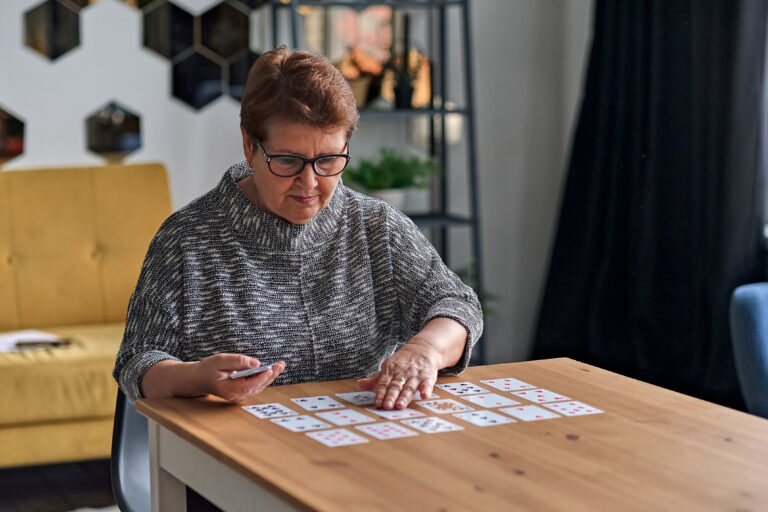It can be very difficult for people to dress or undress their clothing and shoes with later stage dementia. There are clothes and shoes specifically designed for people with dementia, and for their caregivers to have ease of helping. Some shoes are designed for ease of use, such as velcro shoes. Clothing that can be unbuttoned from the side or front can also be incredibly helpful for assisting people with dementia to robe and derobe. Onesies are easy for elderly folks with dementia, with some minimal assistance from caregivers.

Assisting with dressing can be a challenging task for caregivers of individuals with dementia, but there are several strategies that can be employed to help make the process easier and more comfortable for both the caregiver and the person with dementia.
One key strategy is to simplify clothing choices. Offer clothing that is easy to put on and take off, such as clothing with elastic waistbands or Velcro closures. Clothing items that have large openings, such as wide-necked shirts or pants with wide legs, can also be easier for a caregiver to assist with. Additionally, clothing with adaptive features such as magnetic closures, snap buttons, or side zippers can be easier for a caregiver to help a person with dementia put on or take off.
Using visual cues can also be helpful in assisting with dressing. Placing pictures or labels on drawers or closets can help the person identify what clothing to wear and how to put it on. This can be particularly helpful for individuals with dementia who may have difficulty with verbal communication.
Breaking down the dressing process into smaller steps can also be beneficial. Assist the person step-by-step with dressing, using verbal and visual prompts as needed. For example, you can lay out the clothes in the order that they need to be put on and provide clear instructions on how to put them on. It’s important to approach dressing assistance with respect and sensitivity to the person’s dignity and preferences. It’s also important to consider safety and comfort when selecting appropriate clothing and accessories.
In addition to these strategies, there are a number of tools available that can help with dressing. Button hooks, zipper pulls, and dressing sticks are all tools that can be used to assist with putting on or taking off clothing items. These tools can help the person with dementia maintain their independence for longer and may also help reduce the amount of time it takes to complete dressing tasks.
If the person with dementia is still having difficulty with dressing, it may be helpful to seek professional assistance. Occupational therapists can help develop strategies to assist with dressing and recommend appropriate tools and equipment. They can also provide advice on adapting the person’s living environment to make dressing easier and safer.
It’s important to remember that dressing can be a challenging activity for people with dementia, and it may take time and patience to find the right strategies that work for each individual. It’s important to approach dressing assistance with sensitivity and respect, and to involve the person with dementia in the process as much as possible. This can help maintain their independence and sense of control over their daily activities.
When selecting clothing items for a person with dementia, it’s important to consider their comfort and personal preferences. Clothing should be easy to care for and be able to withstand frequent washing and drying. It’s also important to consider the climate and ensure that clothing is appropriate for the current weather conditions. Clothing that is too warm or too cold can be uncomfortable and may make it more difficult for the person with dementia to dress themselves.
Caregivers of individuals with dementia may also want to consider the use of adult diapers and other incontinence products. These products can help manage accidents that may occur during dressing or throughout the day.
Assisting with dressing can be a time-consuming and challenging task for caregivers of individuals with dementia, but by employing the strategies outlined above and seeking professional assistance when needed, it is possible to make the process easier and more comfortable for everyone involved. It’s important to remember that the person with dementia should be treated with dignity and respect, and their preferences and comfort should always be taken into consideration. With patience and persistence, dressing can become a more manageable task for individuals with dementia and their caregivers.
In addition to the strategies outlined above, there are some other tips that caregivers can use to help make dressing easier for individuals with dementia. Here are a few examples:
- Create a calming environment: The process of getting dressed can be stressful and overwhelming for individuals with dementia. Creating a calming environment can help reduce anxiety and make the process easier. Soft lighting, soothing music, and a comfortable temperature can all help create a calming environment.
- Offer choices: Offering choices can help individuals with dementia feel more in control and may make the dressing process easier. For example, you can offer a choice between two different shirts or two different pairs of pants.
- Be patient: The process of dressing can take longer for individuals with dementia, and it’s important to be patient and take the time needed to complete the task. Rushing or pressuring the person can cause frustration and anxiety.
- Keep a consistent routine: Establishing a consistent routine for dressing can help reduce confusion and anxiety. Try to dress the person at the same time each day and in the same order.
- Use positive reinforcement: Praising the person for their efforts during the dressing process can help reinforce positive behaviors and make the process more enjoyable.
Finally, it’s important for caregivers to take care of themselves as well. Assisting with dressing can be physically and emotionally demanding, and it’s important to take breaks when needed and seek support from family, friends, or professional caregivers.
In conclusion, assisting with dressing can be a challenging task for caregivers of individuals with dementia, but by employing the strategies outlined above and seeking professional assistance when needed, it is possible to make the process easier and more comfortable for everyone involved. The key is to approach the task with sensitivity and respect, and to involve the person with dementia in the process as much as possible. With patience and persistence, dressing can become a more manageable task for individuals with dementia and their caregivers.





